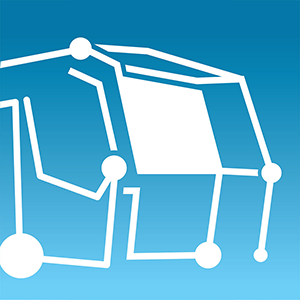
New tracks in the assembly line
Plasser ConstructionLiner: track laying machines in this series have been specially designed for laying new track and are the successors of the SVM 1000. The flexible application options, integrated rail feeding, sleepers which are laid precisely and automatically, and the machine’s high output make it an economical work tool.
Before the track laying machine can be used, the subsoil must be prepared (clearing, installation of a formation protective layer) and the first layer of ballast must be laid. Once in operation, the track laying machine works continuously. Gantry cranes are used to constantly supply new sleepers from the towed sleeper wagons. A reference wire serves to guide the machine for accurate laying of the sleepers with regard to lateral alignment and radius.


Gantry cranes equipped with special gripper arms pull the rails to the front of the machine, where they are picked up by a construction site vehicle (e.g. bulldozer) with rail grippers and pulled onto the ballast bed via auxiliary rollers. This is how they are pre-positioned in defined construction stages.
The powerful crawler running gear at the front of the laying machine drives the entire train, including the sleeper and rail transport wagons. The gantry cranes transport each layer of sleepers to the laying unit.
A proven feed system takes them to the laying unit, which lays them at a precise spacing.
The pre-positioned rails are lifted again, taken past the machine frame, placed on the newly laid sleepers and fixed using the integrated clip units. The complete material logistics therefore takes place on the track under construction.
Plasser & Theurer offers all the track maintenance machines required to complete the track: MDZ mechanized maintenance train (levelling, lifting, lining, and tamping machine; ballast profiling machine and Dynamic Track Stabilizer), rail welding machine, rail grinding machine, track inspection vehicle.
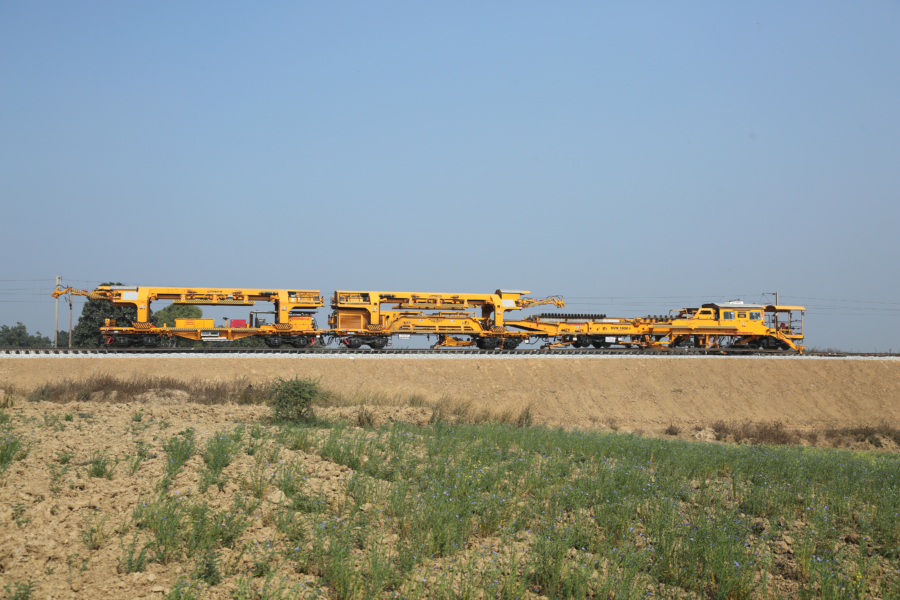
The Plasser ConstructionLiner 3020 ST is a three-part track laying machine with two gantry cranes, one on each transport wagon, and the track laying machine, supported at the rear by the transport wagon and at the front by the crawler running gear on the ballast bed.
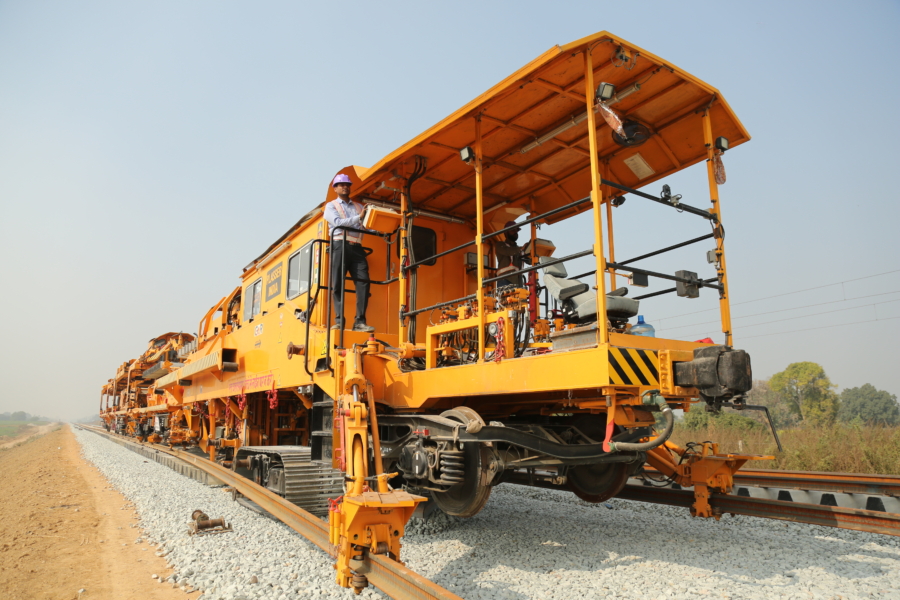
The pre-positioned rails are picked up and guided past the machine frame.
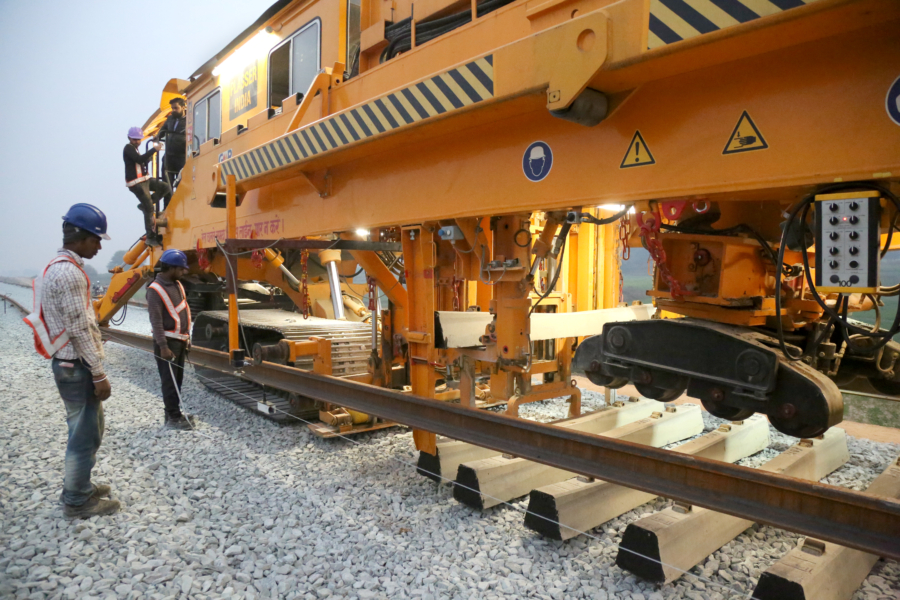
The laying unit places the sleepers at precise spacing. The laying output achieved during use in India is 10 to 12 sleepers per minute.
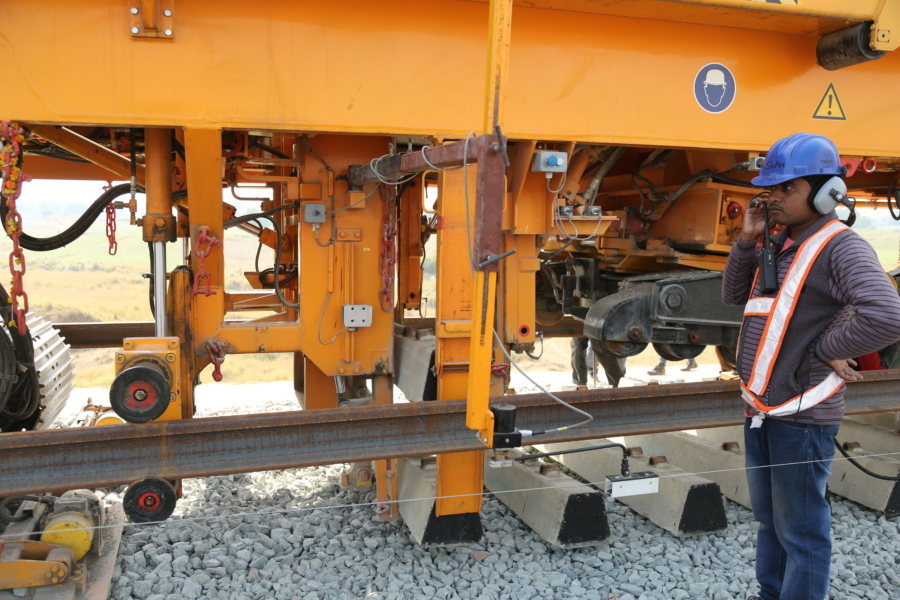
A reference wire is used for guiding the track laying machine and for the precise positioning of the sleepers.
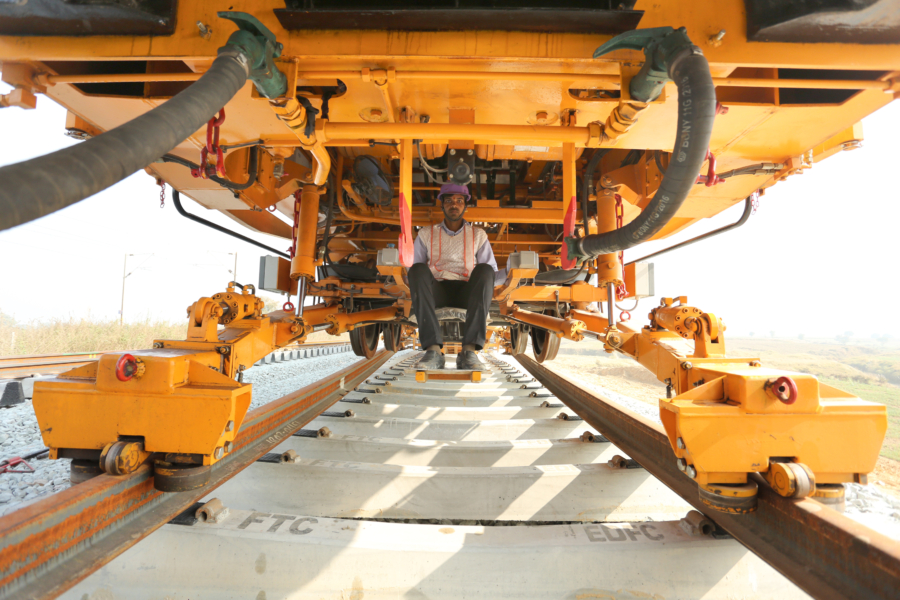
Two rail guiding clamps place the rails in the exact position on the sleepers.
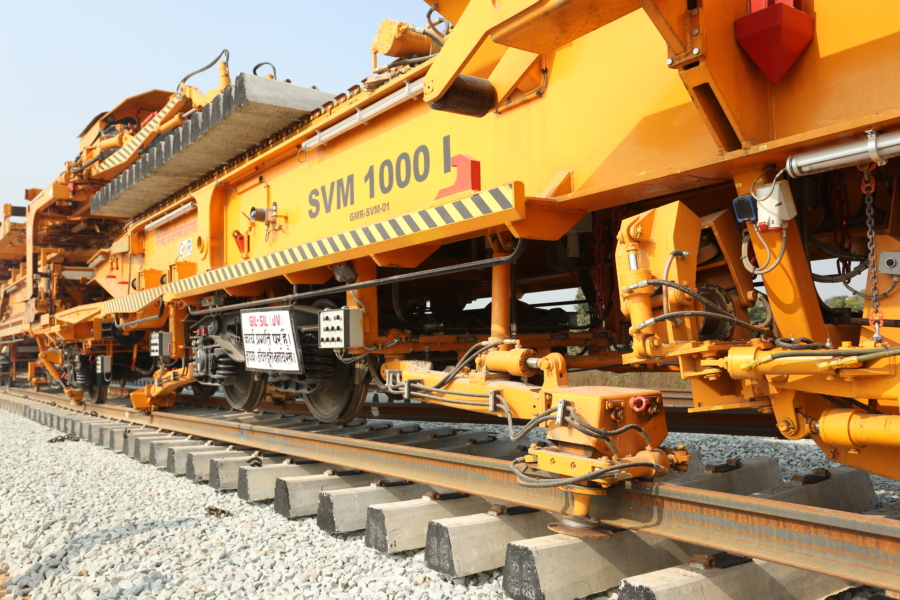
The laid rails are fixed to the sleepers at regular spacing.
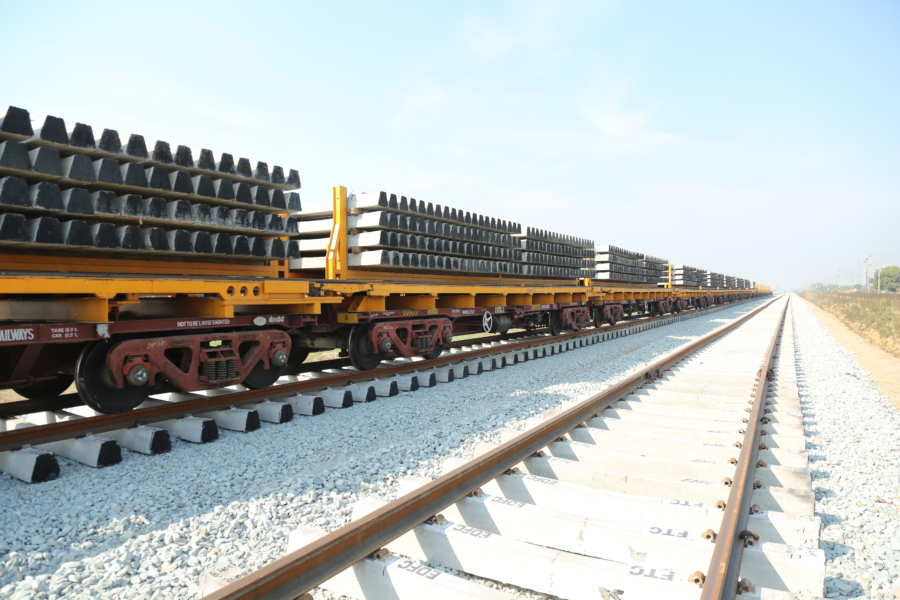
Flat wagons with the required sleepers and rails for the construction of the new track complete the construction train.
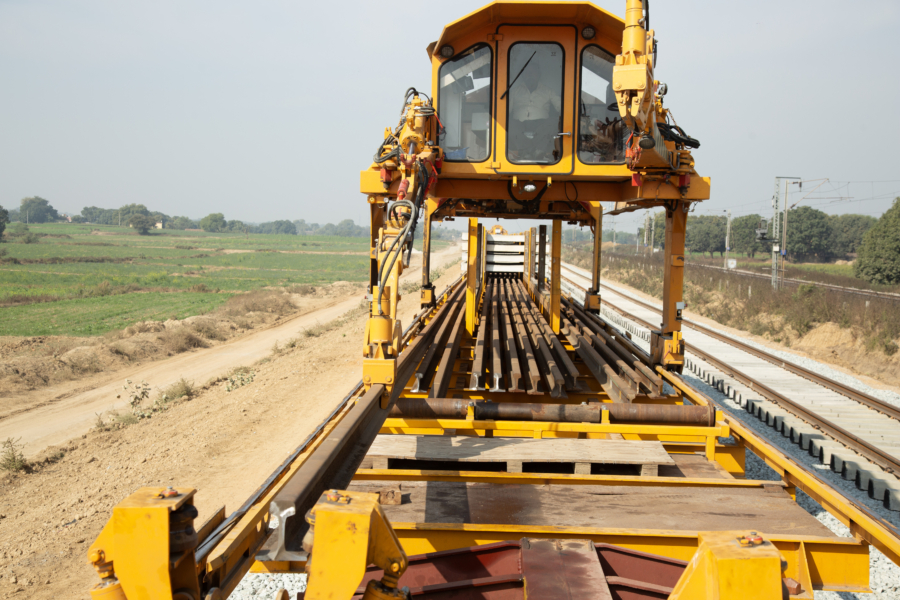
A layer of rails is transported underneath four layers of sleepers.
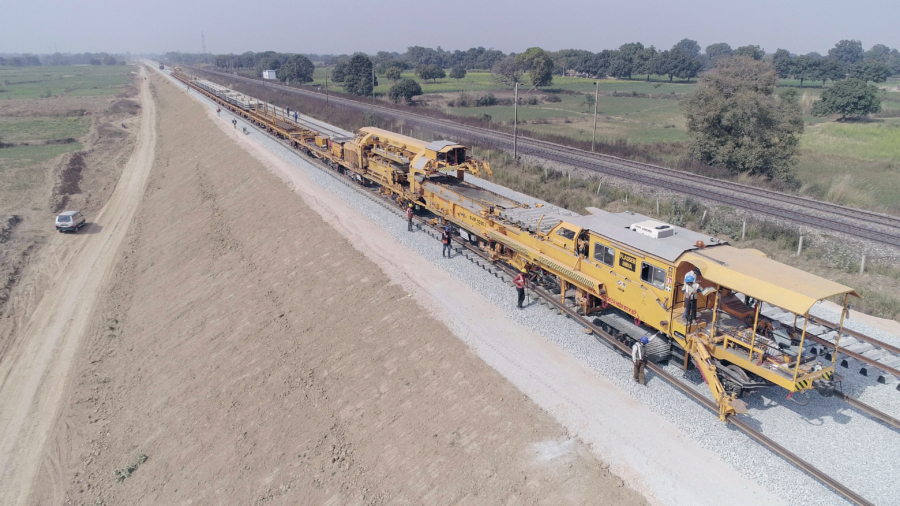
The basic machine concept includes an autonomous energy supply. Once it has been put into operation, the Plasser Construction- Liner works in continuous action.
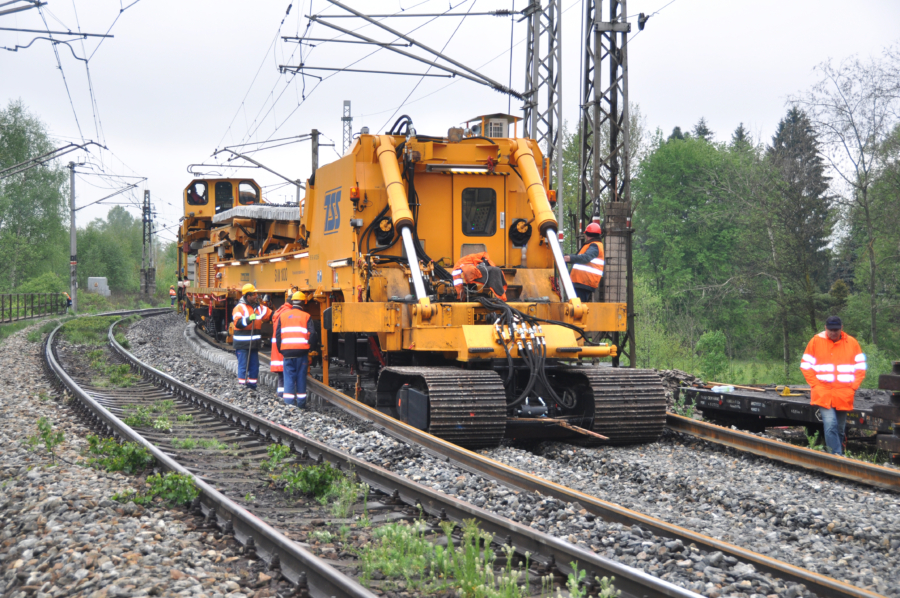
track laying machine (SVM 1000 CZ) in the Czech Republic
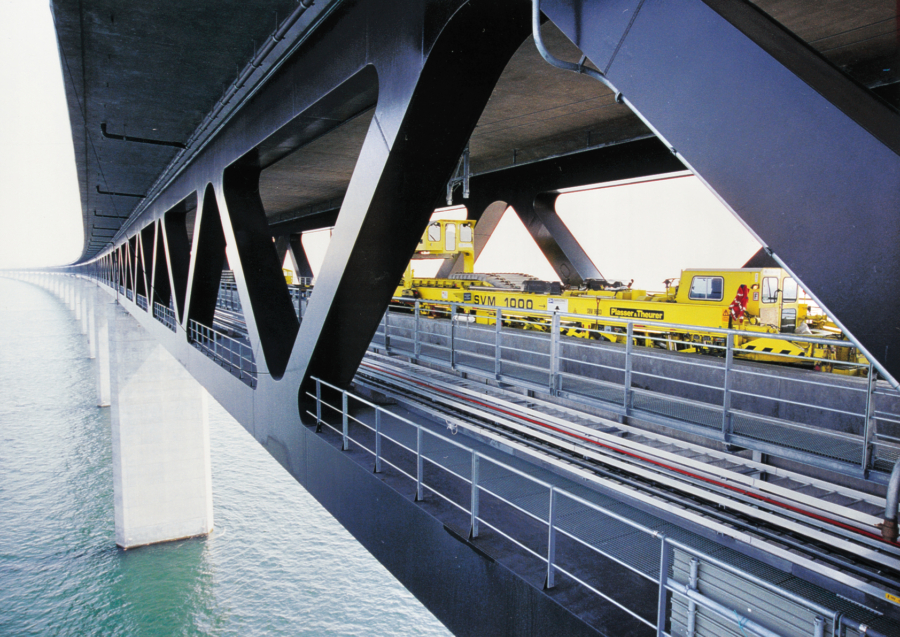
track laying machine (SVM 1000) on the Öresund Bridge in Sweden
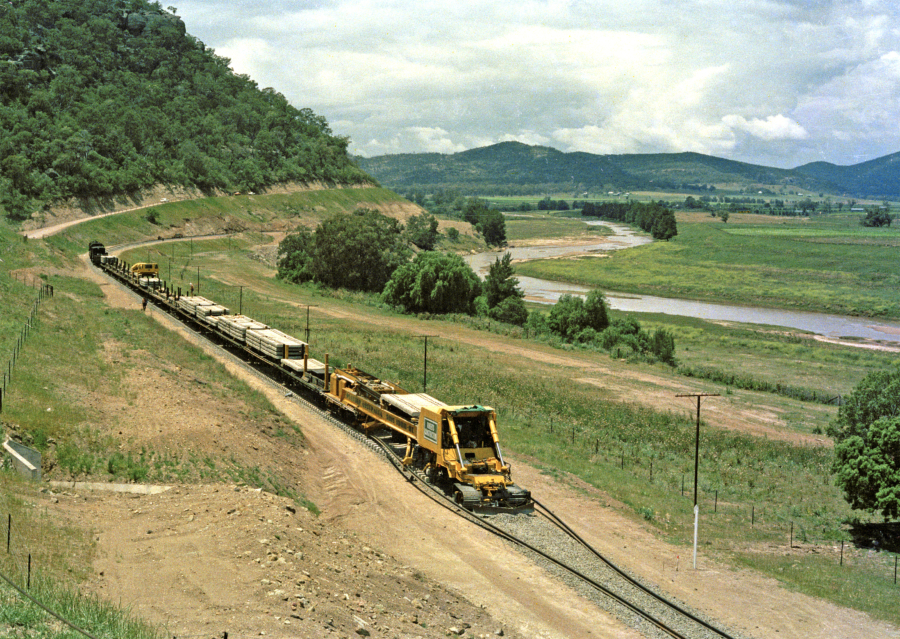
the SVM 1000 has a long history in Australia. For example, it laid 631 km of track on the Alice Springs–Darwin line.